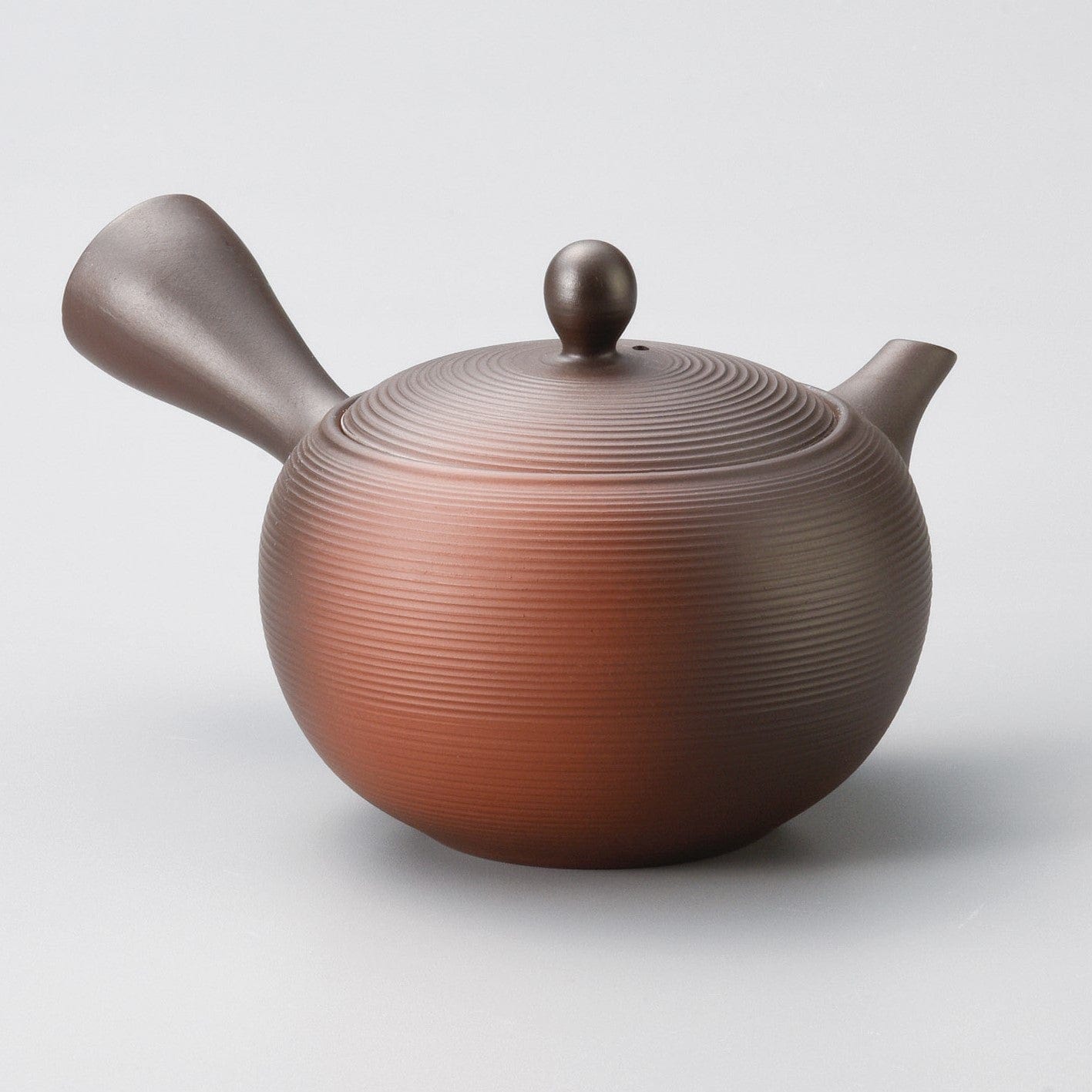
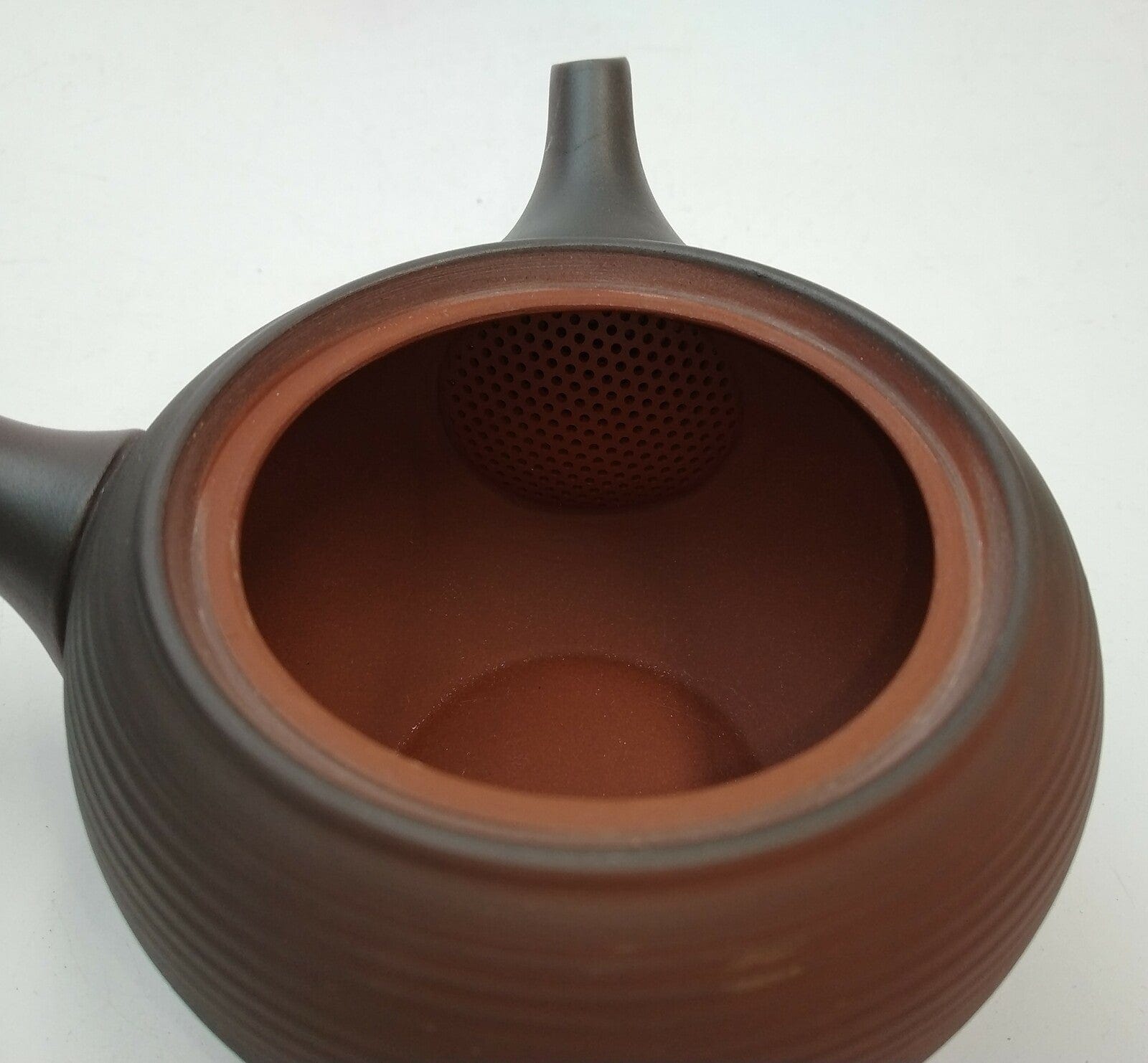
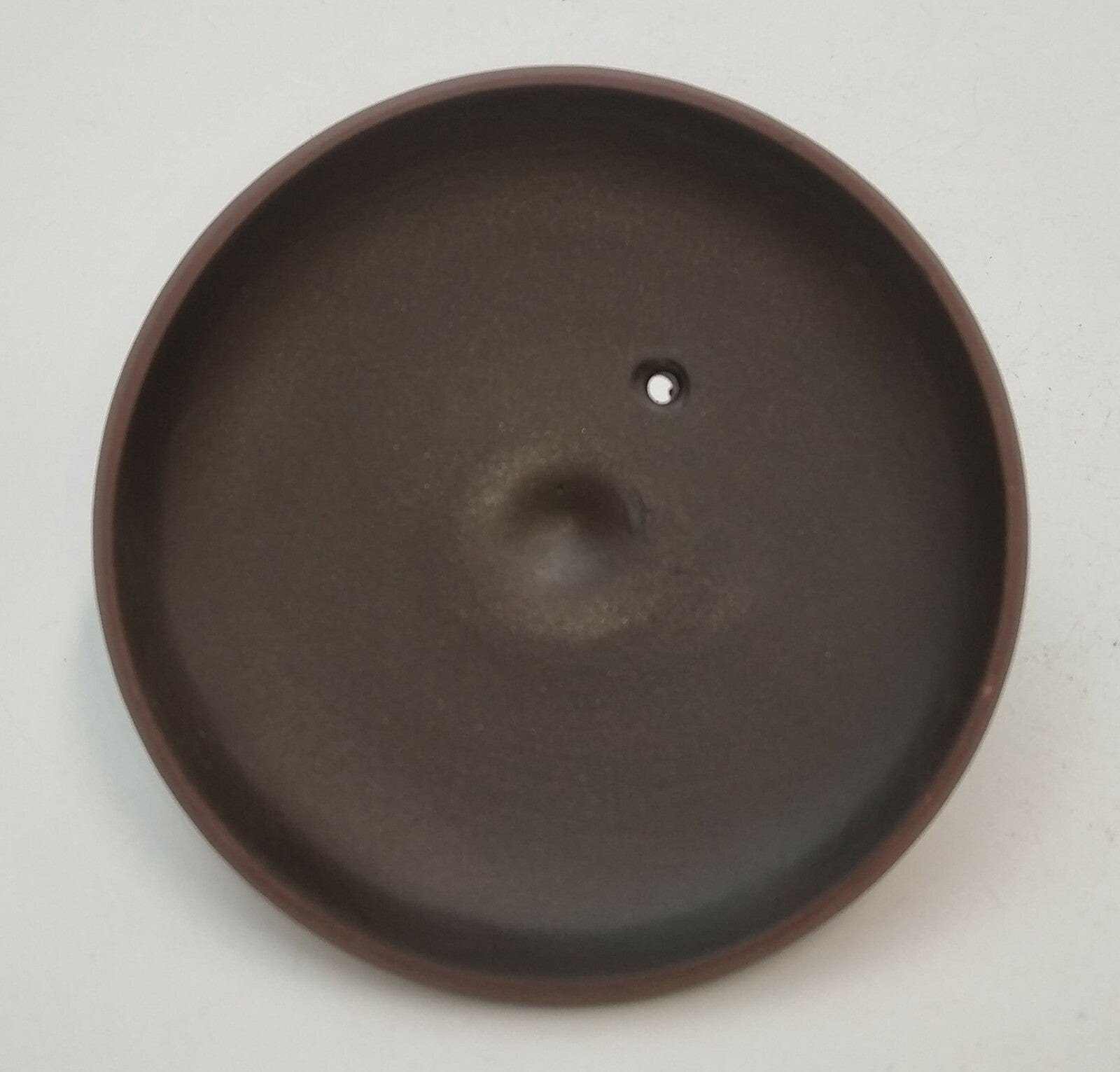
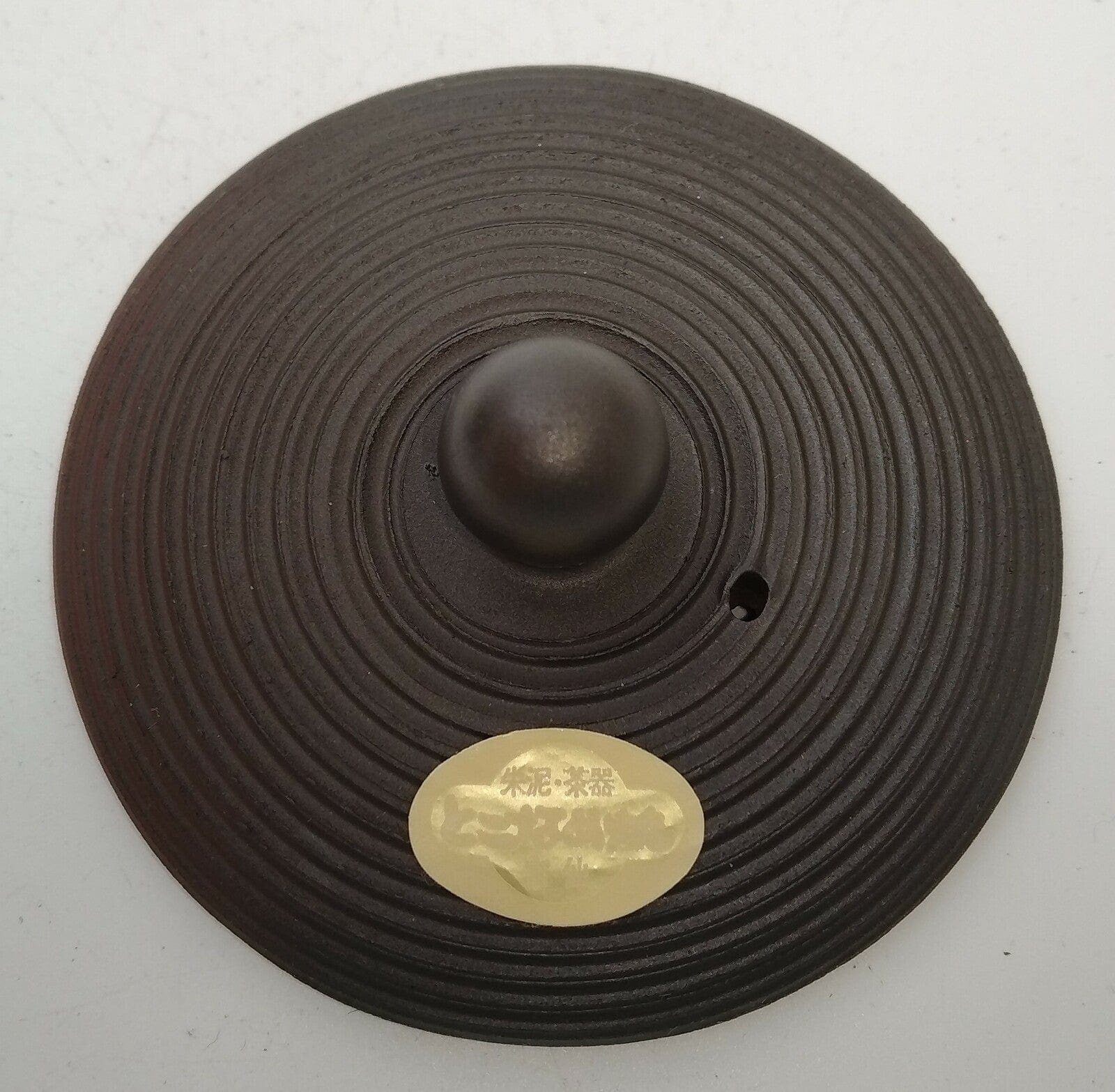
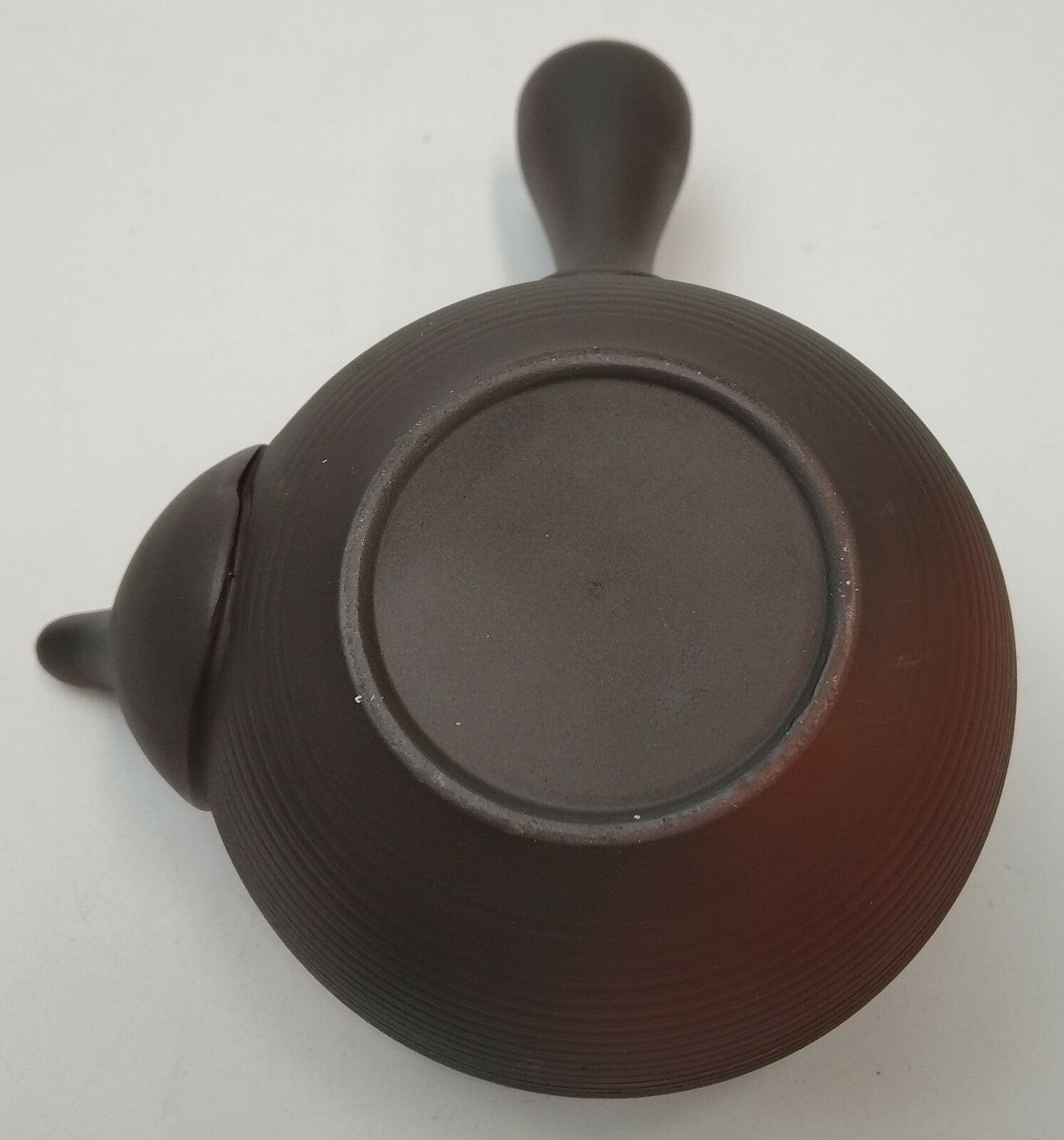
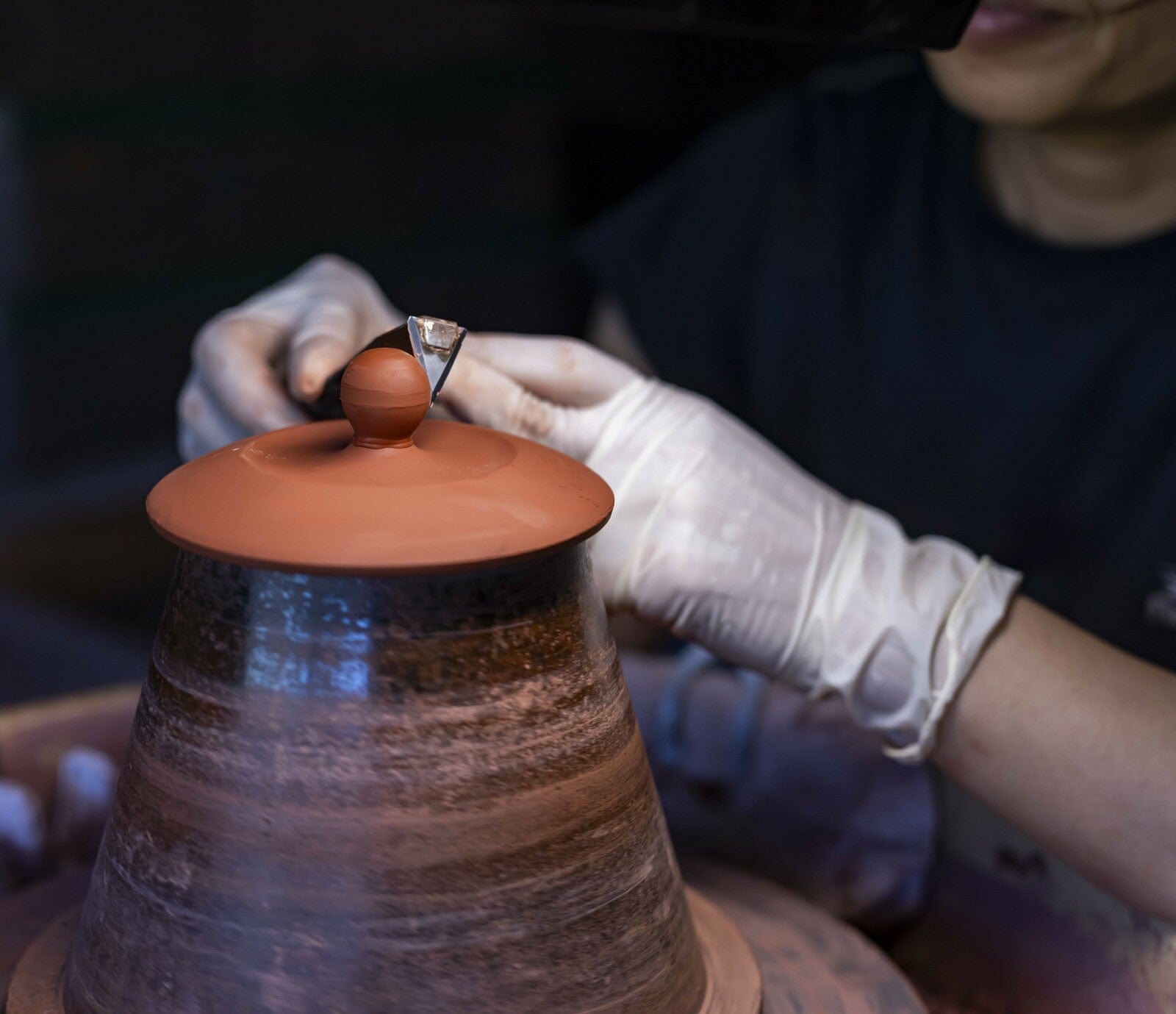
Fusen kiln-type round lined Tea Pot
Fast & Secure Delivery from Japan to your Door [Shipping Policy]
Shop Safely with Encrypted Checkout and Verified Gateways.
Pairs well with

Fusen kiln-type round lined Tea Pot
Elegant Precision – Handcrafted Tokoname-Yaki Kyusu with Built-In Ceramesh Filter
Discover the beauty of form and function in this handcrafted Tokoname-yaki Kyusu teapot—where centuries of tradition meet refined utility. Produced in Tokoname City, one of Japan’s Six Ancient Kilns, this teapot carries a 1,000-year legacy of fine ceramic craftsmanship. Its distinct side handle offers ergonomic control, while the vessel’s elegant curves and subtle clay ridges invite both hand and eye to appreciate its natural beauty. What sets this Kyusu apart is its exceptional built-in *Ceramesh* filter—a signature of Tokoname’s ceramic mastery.
Unlike metal mesh inserts, this finely crafted clay strainer is seamlessly integrated into the pot, ensuring a smooth, uninterrupted pour while preserving the delicate flavor profile of your tea. Whether you're enjoying high-grade sencha, gyokuro, or houjicha, the Ceramesh allows each infusion to unfold gently, without leaf particles clouding the cup. The natural clay body enhances the character of Japanese green tea, absorbing excess bitterness and softening tannins over time. Its subtle two-tone coloration—from earthy terracotta to a deep, smoky finish—is achieved through precise kiln firing, making each piece visually unique.
The ribbed texture not only enhances the aesthetic but offers a non-slip grip for confident handling. With a compact 350ml (11.8 oz) capacity—ideal for solo or two-person use—this Kyusu is perfect for slow, intentional tea rituals. Whether you're just beginning your tea journey or expanding a well-loved collection, it brings the spirit of Japanese hospitality into everyday moments.
Handmade in Japan. Built to last. Designed to inspire.
Product Information
Care instructions
Note
FAQs
All you need to know about Tokoname Ware.
What is Tokoname ware, and why is it so special?
Tokoname ware (常滑焼, Tokoname-yaki) is a traditional form of Japanese pottery that originates from Tokoname City in Aichi Prefecture, one of the Six Ancient Kilns of Japan. With over 900 years of history, it is celebrated for its distinctive use of iron-rich red clay, which is often left unglazed to allow the clay’s natural beauty to shine. This unglazed surface develops a soft sheen and character with age and use, especially when used with tea. Tokoname ware is renowned for its balance of rustic charm, elegant simplicity, and everyday functionality, making it both a collector’s favorite and a staple of modern Japanese homes.
Why are Tokoname teapots (kyūsu) especially valued by tea lovers?
Tokoname’s side-handled teapots, or kyūsu, are highly prized in Japanese tea culture for their superb heat retention, smooth pour, and the unique way the unglazed clay enhances the flavor of green tea—particularly sencha and gyokuro. The clay subtly absorbs tea oils over time, enriching the aroma and depth of future brews. Many Tokoname teapots also feature built-in ceramic mesh filters, which allow for a clean, refined pour without metal interference. These qualities, paired with minimalist design and ergonomic handling, make Tokoname teapots a must-have for serious tea enthusiasts.
Is Tokoname ware always red? Are there other styles or finishes?
While Tokoname ware is most famously associated with its iconic reddish-brown clay, not all pieces are the same. The region’s artisans also produce wares with black, gray, or ash-glazed finishes, depending on the firing techniques, clay blends, and whether they use oxidation or reduction kilns. Some artists incorporate modern design sensibilities, experimenting with glazes and forms, while others preserve traditional aesthetics. Regardless of style, the unifying theme is a commitment to natural textures, balanced forms, and the philosophy of wabi-sabi—the beauty of imperfection and impermanence.
Can Tokoname ware be used daily, or is it mostly decorative?
Tokoname ware is not only beautiful—it’s also highly functional and durable, intended for everyday use. Items like teapots, cups, planters, and incense holders are made to be used regularly. The clay’s natural heat resistance and strength make it ideal for repeated brewing and handling. That said, as with all artisanal ceramics, a little care goes a long way. Avoid using Tokoname ware in microwaves or dishwashers (especially unglazed pieces), and hand wash with warm water only. With proper care, these pieces can last a lifetime and become even more beautiful with age.
How do I know if a piece is authentic Tokoname ware?
Authentic Tokoname ware is typically handcrafted in Tokoname City by artisans who are part of long-established studios or kilns. Many genuine pieces bear a maker’s seal or signature, often engraved or stamped on the base. You may also find regional certifications or documentation when purchasing from reputable sources. Look for details that reflect handcraftsmanship—subtle variations in glaze, slight asymmetry, or a tactile surface. Buying from trusted retailers or directly from workshops ensures authenticity and helps support the preservation of Tokoname’s cultural heritage.

